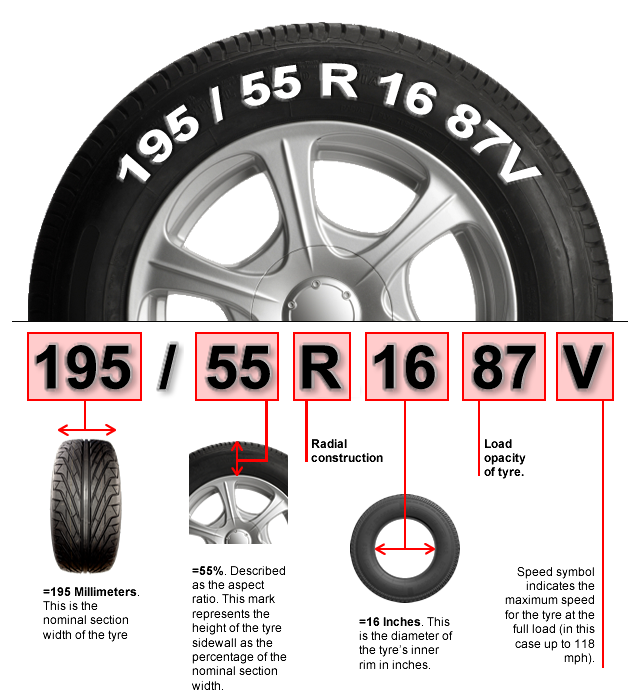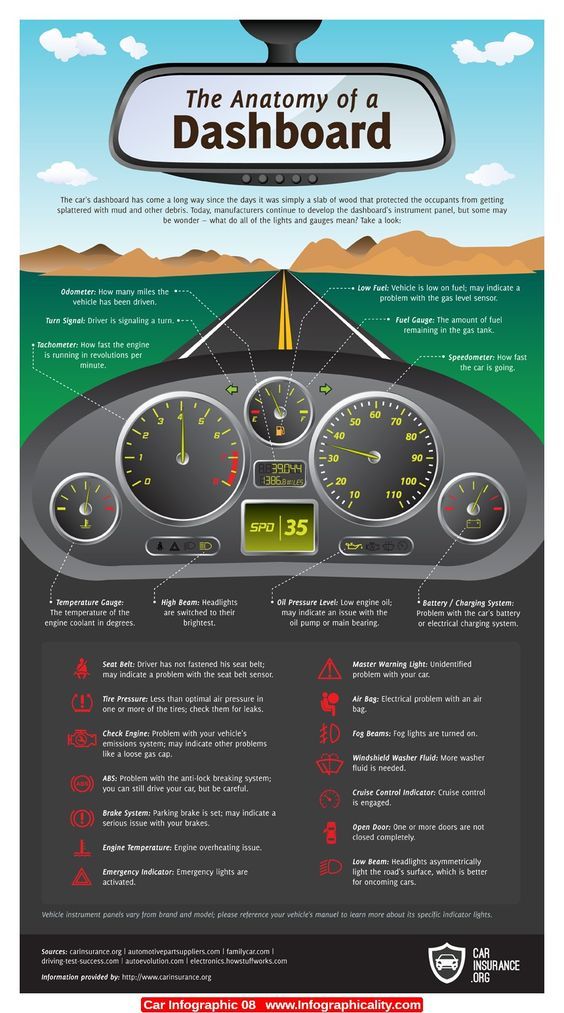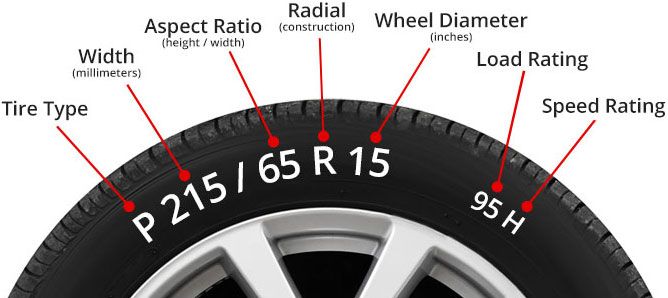There are several reasons you may want to change the size of your tire, but if this occurs, you’ll likely have a problem with your speedometer, particularly if you purchase larger tires.
But if you’ve never changed the size of your tires before, you may wonder exactly how bigger tires affect your speedometer? If you’d like to find out, keep reading!
Bigger tires will trick your car into thinking that it isn’t traveling quite as much, therefore causing your speedometer to read incorrectly. Fortunately, car companies are aware that drivers change their tire size and, therefore, have provided ways for you to fix this issue. However, be sure to fix the speedometer before switching your tires.
If you’d like more information on how to fix a speedometer after switching to large tires and more, keep reading for more useful facts and tips!
Luckily, tire companies understand that many people may choose to switch out their tires for larger tires. Therefore, most vehicles have an innate system to help you fix your speedometer after switching tires.
Usually, you can simply press the calibration button down and then drive the recommended distance, and this way, your car will automatically accommodate the bigger tires. However, this feature only works for an electrical speedometer.
For a mechanical option, you’ll need to locate your transmission and count the number of teeth present.
Next, you’ll need to calculate the number of tire revolutions per mile, which you can do by using the following method:
The final number in your equation is the number of teeth you need on the driving gear to give your speedometer accurate mileage.
Next, you’ll need to locate the part with the right number of teeth that is also suitable for your car, which should allow you to choose the correct piece for your car.
Afterward, you’ll need to replace the part and then your car should start stacking up miles correctly.
Any time you change the tire size on your vehicle, you will inadvertently change the speedometer.
Your car’s speedometer works by counting tire revolutions, so if your tires suddenly switch sizes, they won’t be counted accurately.
Therefore, if you ever switch the size of your tires, then you’ll need to adjust your speedometer as well.
Bigger tires will decrease your fuel economy because they’re heavier, while smaller tires will increase fuel economy.
Furthermore, small tires also have a higher rolling resistance, which will cause them to need more energy to get rolling, affecting your MPG overall.
However, other things related to the tire will also impact your fuel economy. For instance, the tread will matter, so don’t just look at the size of your tire, look at everything that affects MPG.
Bigger wheels will make it seem like your car is driving fewer miles. If your wheels are bigger, they won’t rotate nearly as much. Therefore, your car will think that you’re traveling less.
Luckily, you can fix your speedometer to recognize the bigger wheels, which is essential to prevent your car’s speedometer from reporting inaccurate numbers.
To know more about tires, you can also read our related posts on what are forged wheels, speed rating H vs. V, and if tires affect gas mileage.
Bigger wheels go through fewer revolutions to travel the same distance, meaning your speedometer will assume that you are traveling fewer miles.
For this reason, it’s highly recommended to adapt your speedometer when changing your tires so that it doesn’t get confused.
If you want to change your car’s original tire and wheel size, then you need to consider some important factors. You cannot simply go out and put on a larger wheel and tire and expect your car to be the same. Your car is designed to roll on a specific wheel and tire size. Changes to either may start a cascade of handling and mechanical issues if you don’t plan carefully.
You cannot simply go out and put on a larger wheel and tire and expect your car to be the same. Your car is designed to roll on a specific wheel and tire size. Changes to either may start a cascade of handling and mechanical issues if you don’t plan carefully.
Below is more information about what tire and wheel size changes do to your car and how to change them the right way.
Reasons for Tire and Wheel Size Changes
Sometimes, people have practical reasons to change their tire and wheel size. One big reason to change wheel or tire sizes is if your car’s original tire size is difficult to find or unavailable. For example, many older cars with smaller wheels may have only a few tire options available in some areas. This can be a problem if you drive under certain conditions or have a certain driving style. If you size up, then you may find more tire options or variety.
However, for many people, a change in tire or wheel size has more to do with appearance than anything else. Many people use custom wheels to dress up and add value to their cars. Usually, this means a larger wheel size than before. However, some people, like those who own cars with lowriders, often downsize their wheels with wider rims.
Many people use custom wheels to dress up and add value to their cars. Usually, this means a larger wheel size than before. However, some people, like those who own cars with lowriders, often downsize their wheels with wider rims.
Problems With Tire and Wheel Size Changes
One of the most common problems a change in your tire and wheel size can cause is an inaccurate speedometer. A larger tire has a higher circumference and fewer rotations as you roll along the highway. Because the tires rotate slower, the speedometer reads this as a lower speed. The faster your drive, the more your speedometer reading will be off. Your odometer will read lower, too.
Another issue has to do with wear and tear on suspension and brake components. Larger wheels and tires change the suspension angles and could even affect your transmission’s gear ratio. In some cases, brakes, especially anti-lock brakes, are affected. You may need to make suspension and brake changes to compensate for these problems.
Another consideration you should take into account is the amount of clearance you have for a larger tire. Some wheel wells are very tight. A larger tire or wheel may rub against your fender or your suspension, especially during turns. Larger tires and wheels also add weight that could reduce your car’s gas mileage.
Ways to Minimize Effects of Tire and Wheel Size Changes
You can minimize the possible effects of a larger tire and wheel with a few calculations and changes. If you minimize the overall size difference, then you may eliminate or reduce problems. For example, you may be able to increase your rim size while you reduce your profile or increase your width. If calculated correctly, you may end up with an overall wheel size similar to your stock wheels, but you will have the larger wheels you want.
Though many people recommend against significant tire and wheel size changes, you may be able to do it safely with the right precautions. If you don’t like the math calculations, then use a tire change calculator to see acceptable tire and wheel sizes for your vehicle. Some calculators also give you information about how your speedometer is affected.
Some calculators also give you information about how your speedometer is affected.
A better option is to talk to a tire expert at Evans Tire & Service Centers. We can do the math for you and show you what tire and wheel sizes are best for your vehicle. Call us for an appointment, or bring your vehicle in to one of our San Diego County locations for an assessment.
September 4, 2020
Car.ru
Sooner or later, every car owner is faced with the need to replace wheels. And here a quite reasonable question arises - what will happen if you put elements of a different diameter on the car? The answer here is unambiguous - this will affect many parameters in the car, in particular, the speedometer readings.
Photo: Car.ruCar.ru
We note right away that the data from this device after installing wheels of a different diameter will not go in favor of the owner. In practice, there are already examples when drivers, for example, instead of regular 14-inch elements, installed 16-inch wheels. After that, they paid attention to the speedometer, which showed 60 km / h, but in reality the speed exceeded 80 km / h.
After that, they paid attention to the speedometer, which showed 60 km / h, but in reality the speed exceeded 80 km / h.
Video of the day
Let's plunge into science. The main shaft of the gearbox is equipped with a sensor that reads the speed of the element. The connection takes place with the help of a strong cable, which can also rotate. On the other side of it there is a very complex device, which consists of several plates, springs and one magnet. All this is connected to the instrument arrow. In electronic devices, instead of a cable, an electrical wire is installed, which transmits all data from the shaft to the controller. In one and the other version, the calculation of the speed of movement is carried out according to a single principle. Here, only 2 indicators are taken into account - the number of revolutions and the circumference of the element. An important factor is that when calculating the data, the size of the wheels, which was provided by the factory, is taken into account. For example, if a car is recommended to use only 14-inch wheels, the speedometer will only take this size into account when calculating. Therefore, when installing a larger element, the device will begin to give false readings. But are the numbers really that different?
For example, if a car is recommended to use only 14-inch wheels, the speedometer will only take this size into account when calculating. Therefore, when installing a larger element, the device will begin to give false readings. But are the numbers really that different?
Experts assure that many manufacturers have long been familiar with the desire of motorists to replace wheels with a larger size. The device is initially configured so that the error is taken into account. After installing larger wheels, the error should equate the indicators. However, practice shows that the speedometer always lies. And this is explained by the fact that in addition to the error, there are other factors that affect the readings. For example, the same sensor may give false data. Experts say that rear-wheel drive cars read speed more accurately than front-wheel drive cars. This is due to the fact that the latter have one more error when cornering.
Let's remember mathematics. If you put 16-inch wheels instead of 14-inch wheels, the readings will deviate by about 4%. To calculate the error, you need to calculate two lengths - the circumference of the old and new element. This must be done according to the formula - 3.14 * D (wheel diameter). The wheel diameter can be found by adding the rim diameter and tire height multiplied by 2. To obtain error data, you need to find the difference between the circumference of the new and old wheels, then divide by the circumference of the old elements, multiplied by 100. For example, if you get a number of 3.5 , this means that the deviations on the speedometer are 3.5%. If during the movement the speed on the device is 79km/h, in fact, it reaches 81.76 km/h. The same principle applies to mileage - it costs 1000 km, but in fact 1035 km.
To calculate the error, you need to calculate two lengths - the circumference of the old and new element. This must be done according to the formula - 3.14 * D (wheel diameter). The wheel diameter can be found by adding the rim diameter and tire height multiplied by 2. To obtain error data, you need to find the difference between the circumference of the new and old wheels, then divide by the circumference of the old elements, multiplied by 100. For example, if you get a number of 3.5 , this means that the deviations on the speedometer are 3.5%. If during the movement the speed on the device is 79km/h, in fact, it reaches 81.76 km/h. The same principle applies to mileage - it costs 1000 km, but in fact 1035 km.
Total. Wheels of a different size can affect the speedometer readings - the speed is shown lower, the same applies to the mileage indicator.
Autoexpert, Test drives,
Novice drivers often put different types of rollers on the car, not taking into account the design features of the car. At the same time, the question of whether the size of the wheels can affect the speedometer readings is never taken into account, which is really important. No one likes getting a speeding ticket all the time.
At the same time, the question of whether the size of the wheels can affect the speedometer readings is never taken into account, which is really important. No one likes getting a speeding ticket all the time.
Content
Classic cars used a mechanical speedometer system. A mechanical sensor is installed on the output shaft of the gearbox, which reads the number of its revolutions. Further, the rotation is transmitted to a flexible shaft (steel cable) and fed to the device itself. Inside the device there is a magnetic insert that unwinds and pulls the arrow of the device.
In the electronic version, there is no physical connection between the instrument and the gearbox shaft. The principle of operation of the mechanism is as follows.
The principle of operation of the mechanism is as follows.
Regardless of the principle of operation, the speedometer of each car is calibrated to its design features. The most important thing here is the size of the wheels and the height of the tire. The bottom line is that the larger the overall diameter of the wheel, the farther the car travels in one revolution. So for a car with R13 wheels, you will need to make more revolutions than a model with R17 rollers to overcome the same distance.
From the above information, it becomes clear that if the car originally had wheels of the same size, when they are replaced with larger rollers, the speedometer will show a speed lower than it actually is.